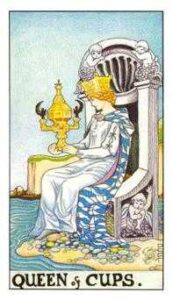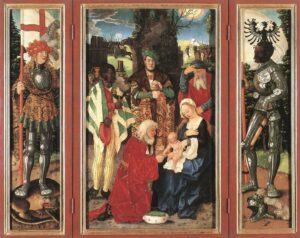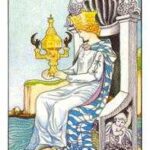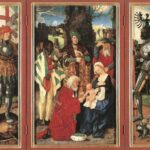The killing fields of Cambodia are worse than I imagined. You pull into a parking lot. You walk under a stucco arch identifying this as a site of genocide. You get it. In your mind. But you are utterly unprepared for the impact it makes on your emotions. You see grassy hillocks bordering innocuous-looking indentations in the earth. Then you look closer. Interspersed between grass and clay are snatches of muddied, colored fabric. Fragments of the clothes of victims. Here a bone. There a tooth. Several teeth.
I’m drawn to a thick, deeply veined tree with graceful branches. It looks peaceful as a blessing. I wonder if it has somehow felt traces of the agony of the victims who were brought here blindfolded, forced to kneel over their graves, then bludgeoned to death. I walk around it to read the sign. It has a name, this tree. It’s called Magic Tree. The sign says, “The tree was used as a tool to hang a loudspeaker which make sound [of music] louder to avoid the moan of victims while they were being executed.” Didn’t want to bother the neighbors.
The cuticles of my thumbs are bleeding. I’ve been gnawing at them since morning when we visited the high school in Phnom Penh that was turned into a prison for the men and women the Khmer Rouge considered enemies: teachers, artists, mechanics, shopkeepers. I left a room used for torturing “VIP’s” — mostly intellectuals — feeling ill and wiping away tears. Other rooms displayed glass protected photos taken of prisoners the day they arrived. An especially beautiful woman reminded me of Catherine Zeta-Jones. That’s her picture above. She might have been a movie star too had she lived.
When the Khmer Rouge collapsed in 1979 only seven of the 17,000 people processed through that prison known as S-21 had survived. Three of them are still alive. One happened to be there and agreed to talk with us. He said he was accused of being a spy for the CIA and was tortured three times a day to make him confess. He had no idea what the CIA was. He was spared the trip to the nearby killing field because he was a mechanic and knew how to repair the typewriters used for recording “confessions” and the sewing machines needed for making and repairing the clothes of officers and guards, many of whom are still alive and living, unpunished, in Cambodia.
The killers in the killing fields were teen-aged boys. They held babies and children by their ankles and swung them against tree trunks to bash in their heads. We wondered how they could have done such things. The answer is simple. Kill or be killed. They chose killing. Pol Pot, the leader of the Khmer Rouge who ordered the killing spent some time in his youth as a monk. What turned him into the unspeakable monster he became? Some say he had syphilis. Others, that something very bad happened to him in his youth.
Can we picture ourselves ever doing such things? Most can’t. And yet, the archetype of evil dwells in all of us. Given the right circumstances our shadows could overcome us and you and I could kill too. But we also contain the Self, the archetype of divinity. It cannot protect us from the Pol Pots of the world, but unveiling its Beauty can protect others from the Beast in us.
The cuticles of my thumbs are bleeding. I’ve been gnawing at them since morning when we visited the high school in Phnom Penh that was turned into a prison for the men and women the Khmer Rouge considered enemies: teachers, artists, mechanics, shopkeepers. I left a room used for torturing “VIP’s” — mostly intellectuals — feeling ill and wiping away tears. Other rooms displayed glass protected photos taken of prisoners the day they arrived. An especially beautiful woman reminded me of Catherine Zeta-Jones. That’s her picture above. She might have been a movie star too had she lived.
When the Khmer Rouge collapsed in 1979 only seven of the 17,000 people processed through that prison known as S-21 had survived. Three of them are still alive. One happened to be there and agreed to talk with us. He said he was accused of being a spy for the CIA and was tortured three times a day to make him confess. He had no idea what the CIA was. He was spared the trip to the nearby killing field because he was a mechanic and knew how to repair the typewriters used for recording “confessions” and the sewing machines needed for making and repairing the clothes of officers and guards, many of whom are still alive and living, unpunished, in Cambodia.
The killers in the killing fields were teen-aged boys. They held babies and children by their ankles and swung them against tree trunks to bash in their heads. We wondered how they could have done such things. The answer is simple. Kill or be killed. They chose killing. Pol Pot, the leader of the Khmer Rouge who ordered the killing spent some time in his youth as a monk. What turned him into the unspeakable monster he became? Some say he had syphilis. Others, that something very bad happened to him in his youth.
Can we picture ourselves ever doing such things? Most can’t. And yet, the archetype of evil dwells in all of us. Given the right circumstances our shadows could overcome us and you and I could kill too. But we also contain the Self, the archetype of divinity. It cannot protect us from the Pol Pots of the world, but unveiling its Beauty can protect others from the Beast in us.





0 Responses
Jeanie,
An extraordinary account of an extraordinary experience by an extraordinarily courageous heart. I don’t know that I could expose myself to the shock and horror. I don’t know what has led you to bear witness to this evil in this way at this time of your life. But thank you for doing so and thank you for reminding us to keep our feet firmly on the path of love and humaneness.
William
Thank you, William. Maybe it’s a function of my age, but injustice and the suffering of others seems more real and painful to me now than ever before. Maybe it takes a lot of life experience to really appreciate what a gift life is, and to know in your gut what a crime it is to wantonly destroy it, and to want to do something about it. I hope sharing my thoughts does at least make a tiny difference for someone, somewhere. This is what writing is all about for me: to help someone see and feel. To make a difference. That’s all.
Blessings,
Jeanie
Jeanie,
How impressed I am with your courage to find words that give witness to horror that lies beyond comprehension. Even though real it remains an unbelievable testament to the absolute heart of darkness that is part of human potential.
Sally
Thank you, Sally. Finding words for the horror was actually a relief; a therapeutic outlet. I think the struggle to express profound emotion is at the heart of creativity in whatever form it may take, don’t you? I mean, you can write creatively, cook creatively, parent creatively, or live creatively, etc. The thing that makes it creative is the fact that it’s inspired by the authentic feeling of a unique soul.
Blessings,
Jeanie